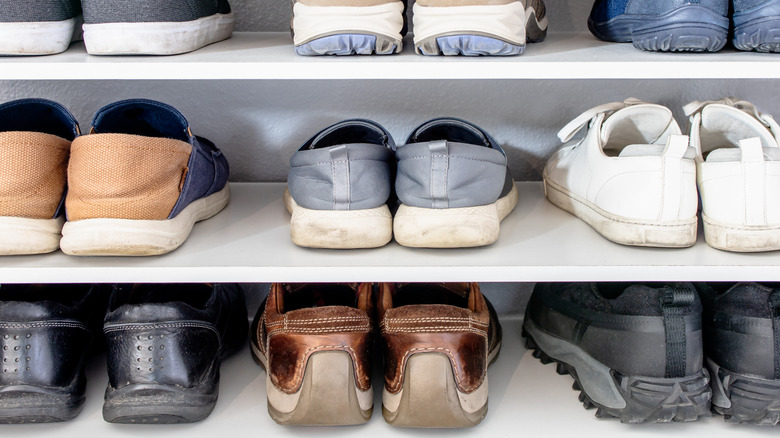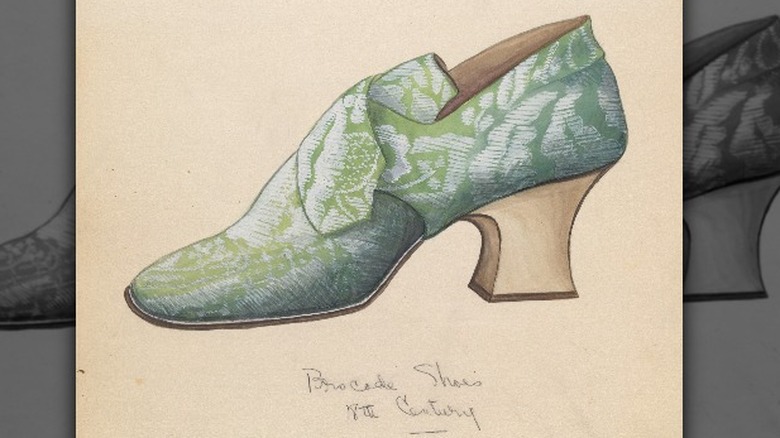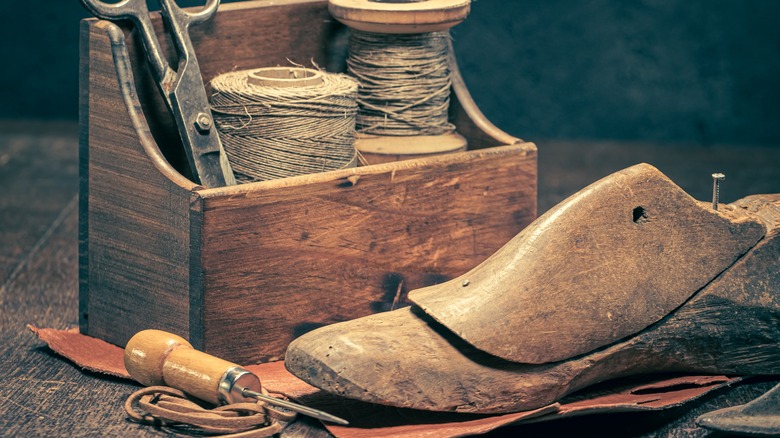Shoes Weren't Always Made For Right And Left Feet
Everything you've learned about history as an adult has probably decimated your beliefs about truth, society, and the quality of secondary education, right? COINTELPRO, the Tuskegee Experiment, the Dole Pineapple Rebellion: The facts of what humans have done rarely bear more than a slight resemblance to the stories we tell about those facts (and to see even that resemblance, you'd have to squint your eyes real tight). It is overwhelming. It is alarming, It is captivating. It is unprecedented.
Then every time, right on cue, another insidious, as-yet-unascertainable truth about what's gone down on planet Earth among the people who live there emerges from the shadows, from a hyperlink on Wikipedia your cursor lingered upon too long, or an article arresting you with its glaring rebuke, ready to disassemble all you hold dear in 500 words or less. It's time you knew the truth about the history of shoes. Left was not always left. Right was not always right. Sometimes you could just go with either one, you know?
Before the year 1860, this may have been the way of the world in many Western communities (via "A Case Study: The Treatment of A Pair of Sixteenth-Century Shoes"). (It is important to reiterate that modern footwear does utilize unique shapes for left and right shoes, so that information has not been updated and one should proceed with their shoe-wearing business as usual.)
For over 200 years, a shoe was a shoe was a shoe, and that was it
According to Debbie McCarthy in "A Case Study: The Treatment of A Pair of Sixteenth-Century Shoes," specific shoes for the left and right feet first became a common manufacturing item around the year 1860. That sounds ridiculous, right? Surely we would have heard of this by now? From the 16th to the mid-19th centuries, shoes were not distinctly made in pairs for left and right feet.
These easygoing footwear products were called "straights," named for the straight shoe last (a wooden shoe-sized frame) with which this type of shoes are made (via Noreen McGuire, posted at Fashioning the Early Modern). For several centuries in Europe (the Textile Revolution wasn't until the 18th century, after all), this was how shoes were constructed. That was it. You didn't question it. One obvious upside, of course, was that it saved you the time and trouble of trying to match the correct shoe to the appropriate foot.
But why?
According to Noreen McGuire's assessment of a pair of 1797 shoes at the Victoria & Albert Museum of Fashion (via Fashioning the Early Modern), the lack of directional-appendage-customization wasn't borne from historical naïveté, but good, old-fashioned business sense. McGuire writes, "Straight shoes were the norm from the late 16th century up to the late 18th century, as by using just one straight last for each heel height, rather than a left and a right, the shoemaker essentially halved his expenditure on lasts." Since manufacturing (making the shoe) and materials (what you need to make the shoe) were often brought in per-order during the era of the Textile Revolution, it made sense to prefer the ability to make shoes with twice as high a chance of being needed again in the future. It simplified the process as well.
While human civilizations have donned shoes for a very, very long time (with various degrees of seriousness about doing so), custom-made shoes were more the norm in the older days of the Late Middle Ages. By the mid-19th century, of course, we'd have the birth of something new entirely: the factory. With it we first dreamed up mass production, and in so doing, we got better — and better fitting — shoes.


